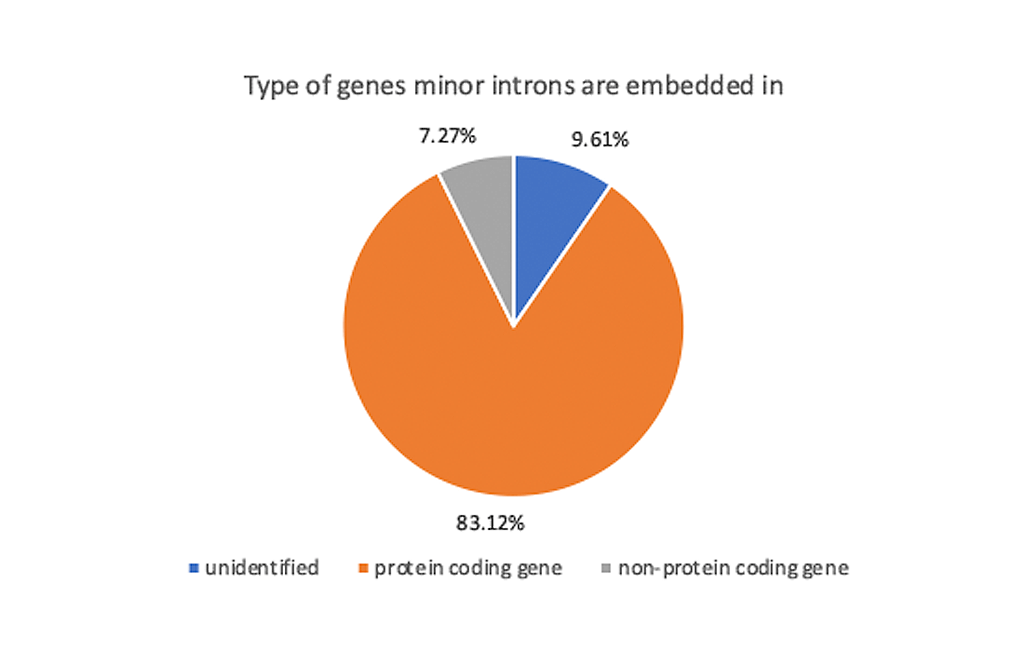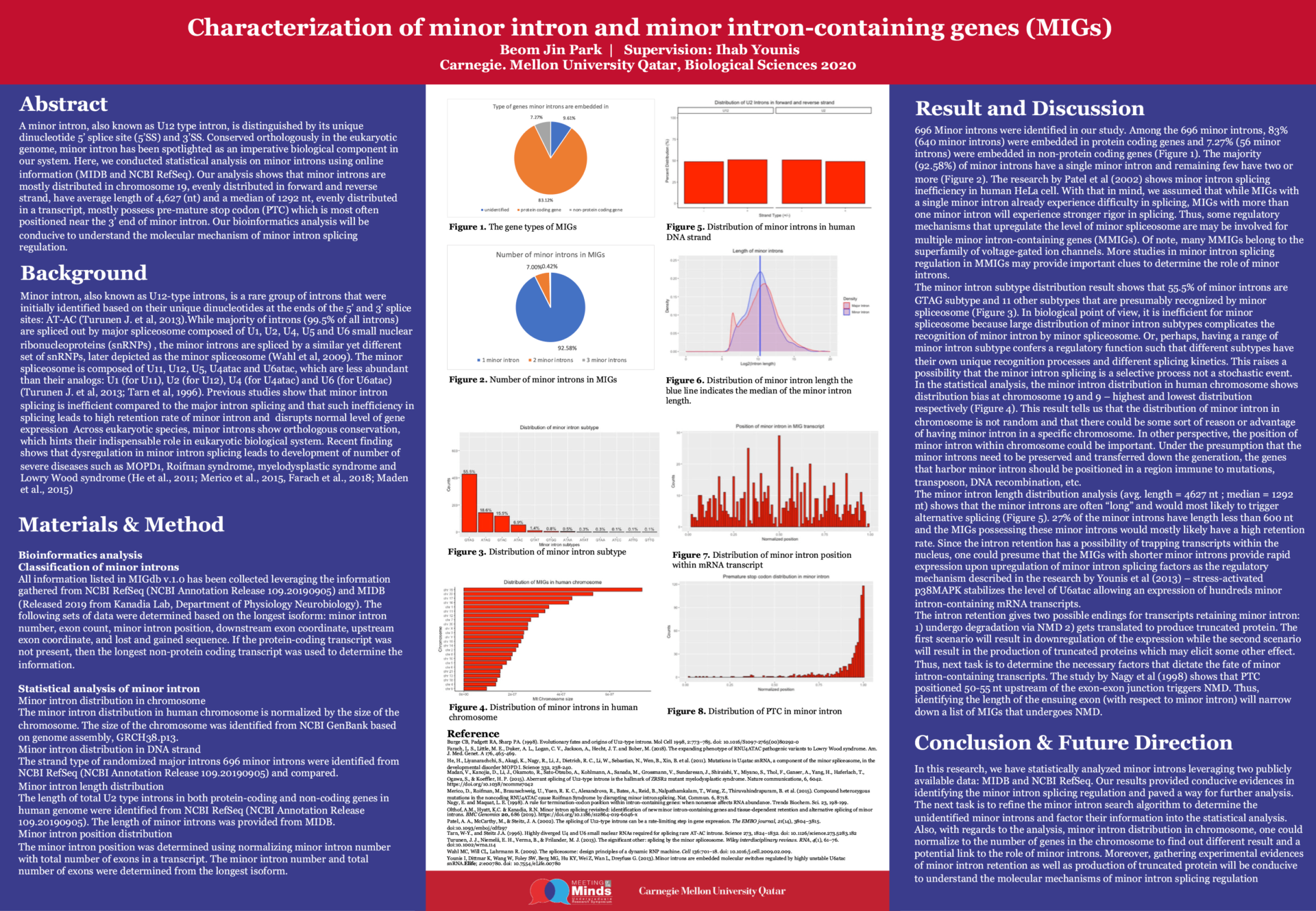A minor intron, also known as U12 type intron, is distinguished by its unique dinucleotide 5’ splice site (5’SS) and 3’SS. Conserved orthologously in the eukaryotic genome, minor intron has been spotlighted as an imperative biological component in our system. Compared to its counterpart, a minor intron is rare, inefficient in splicing and has its own splicing machinery. Due to its persistent conservation and unique characteristics, scientists strive to determine the role of minor intron in the system of multicellular organisms. Here, we conducted statistical analysis on minor introns using online information (MIDB and NCBI RefSeq). Our analysis shows that minor introns are mostly distributed in chromosome 19, evenly distributed in forward and reverse strand, have average length of 4,627 (nt) and a median of 1292 nt, evenly distributed in a transcript, mostly possess pre-mature stop codon (PTC) which is most often positioned near the 3’ end of minor intron. Our bioinformatics analysis will be conducive to understand the molecular mechanism of minor intron splicing regulation.




escort bangalore
nice article,
https://eroticallgirl.in/ads/call-girls?city=bangalore
body to body massage
https://eroticallgirl.in/ads/call-girls?region=jharkhand&city=ranchi
massage xxx
https://eroticallgirl.in/ads/call-girls?region=uttar-pradesh
shemale listing
https://eroticallgirl.in/ads/call-girls?region=madhya-pradesh
shemale in delhi
https://eroticallgirl.in/ads/call-girls?region=madhya-pradesh
transexual Hyderabad
https://eroticallgirl.in/ads/call-girls?region=andhra-pradesh&city=vijayawada